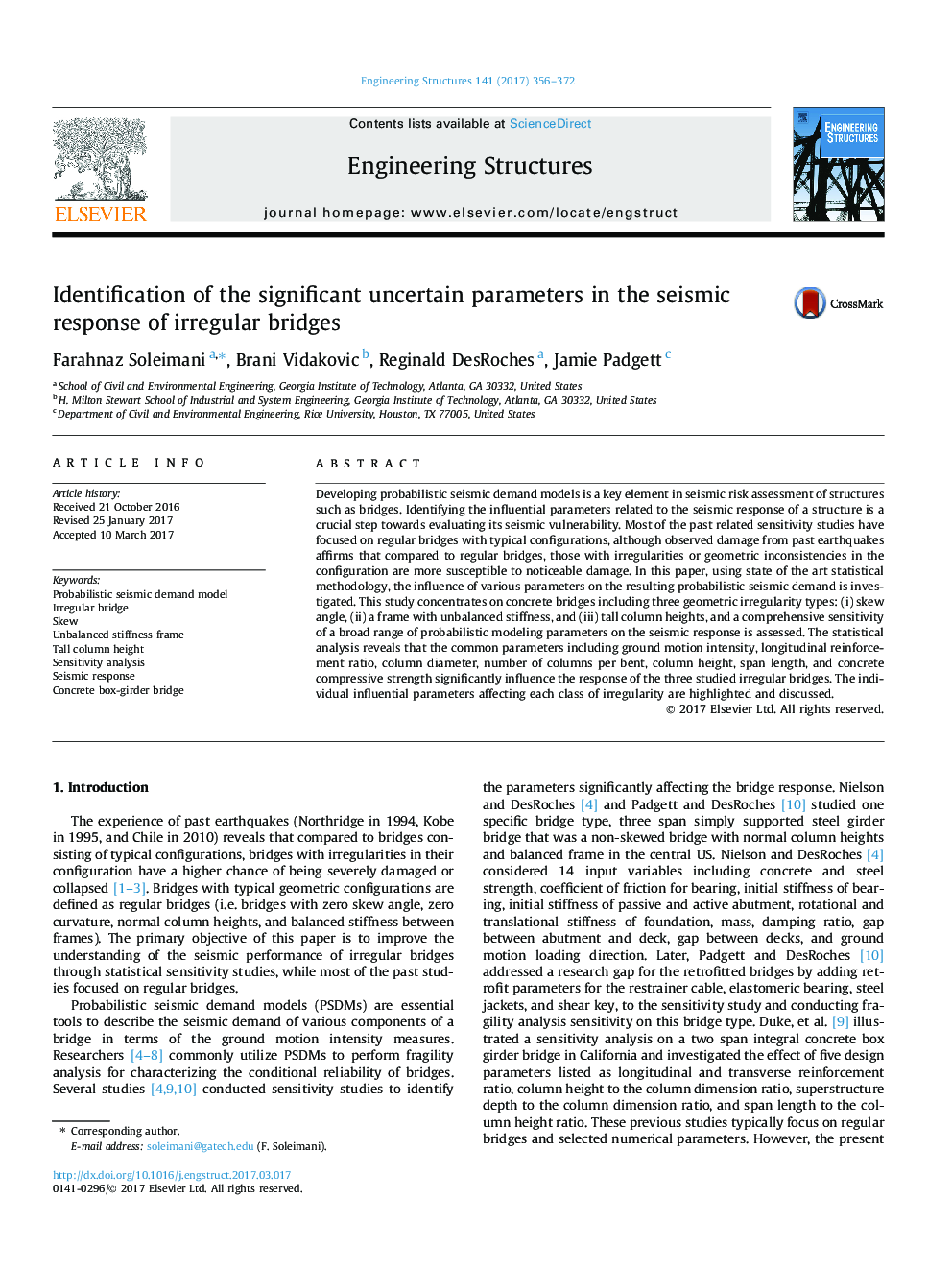| Article ID | Journal | Published Year | Pages | File Type |
|---|---|---|---|---|
| 4920255 | Engineering Structures | 2017 | 17 Pages |
Abstract
Developing probabilistic seismic demand models is a key element in seismic risk assessment of structures such as bridges. Identifying the influential parameters related to the seismic response of a structure is a crucial step towards evaluating its seismic vulnerability. Most of the past related sensitivity studies have focused on regular bridges with typical configurations, although observed damage from past earthquakes affirms that compared to regular bridges, those with irregularities or geometric inconsistencies in the configuration are more susceptible to noticeable damage. In this paper, using state of the art statistical methodology, the influence of various parameters on the resulting probabilistic seismic demand is investigated. This study concentrates on concrete bridges including three geometric irregularity types: (i) skew angle, (ii) a frame with unbalanced stiffness, and (iii) tall column heights, and a comprehensive sensitivity of a broad range of probabilistic modeling parameters on the seismic response is assessed. The statistical analysis reveals that the common parameters including ground motion intensity, longitudinal reinforcement ratio, column diameter, number of columns per bent, column height, span length, and concrete compressive strength significantly influence the response of the three studied irregular bridges. The individual influential parameters affecting each class of irregularity are highlighted and discussed.
Related Topics
Physical Sciences and Engineering
Earth and Planetary Sciences
Geotechnical Engineering and Engineering Geology
Authors
Farahnaz Soleimani, Brani Vidakovic, Reginald DesRoches, Jamie Padgett,
